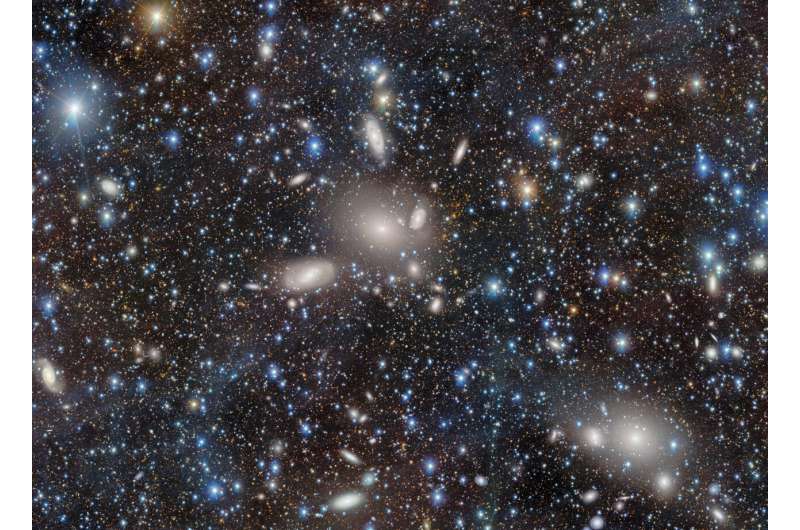The cluster is rich in lenticular galaxies—a type of disk galaxy that has little interstellar matter and thus little ongoing star formation—and also hosts some irregular galaxies. A plethora of rarer, low-luminosity dwarf galaxies have been found in the cluster, including ultra-compact dwarfs, compact ellipticals, and blue compact dwarfs. The cluster may also contain dwarf spheroidal galaxies and the ultra-diffuse galaxy sub-type, though further investigations are needed to confirm them.
Citation:
Dark energy camera captures the glittering galaxies of the Antlia Cluster (2025, January 1)
retrieved 1 January 2025
from https://phys.org/news/2024-12-dark-energy-camera-captures-glittering.html
This document is subject to copyright. Apart from any fair dealing for the purpose of private study or research, no
part may be reproduced without the written permission. The content is provided for information purposes only.
NSF NOIRLab rings in the New Year with a glittering galaxyscape captured with the Department of Energy-fabricated Dark Energy Camera, mounted on the U.S. National Science Foundation Víctor M. Blanco 4-meter Telescope at Cerro Tololo Inter-American Observatory in Chile, a Program of NSF NOIRLab. This ultra-deep view of the Antlia Cluster reveals a spectacular array of galaxy types among the hundreds that make up its population.
The Antlia Cluster is dominated by two massive elliptical galaxies—NGC 3268 and NGC 3258. These central galaxies are surrounded by a number of faint dwarf galaxies. Researchers believe these two galaxies are in the process of merging, based on X-ray observations that revealed a ‘rope’ of globular clusters along the peak area of light between them. This may be evidence that the Antlia cluster is really two smaller clusters that are combining.
The development of larger and more highly sensitized cameras like DECam allows astronomers to see the fainter details of these superstructures, such as the diffuse light between the cluster galaxies, which is a combination of intracluster light—the feeble glow of stars flung out into the gravitational field of the cluster by the churn of interacting galaxies—and faded light from the nearby Antlia Supernova Remnant discovered in 2002.
NSF–DOE Vera C. Rubin Observatory’s upcoming Legacy Survey of Space and Time will be the first astronomical survey to provide scientists with the data they need to detect intracluster light in thousands of galaxy clusters, unlocking clues to the distribution of dark matter around galaxy clusters and the evolutionary history of the universe on large scales.

